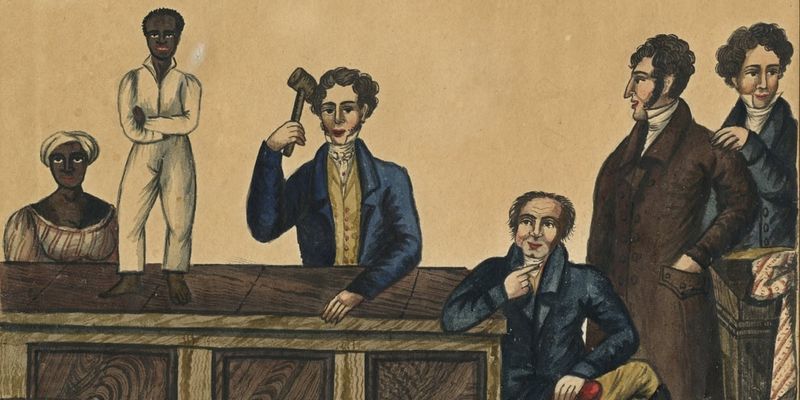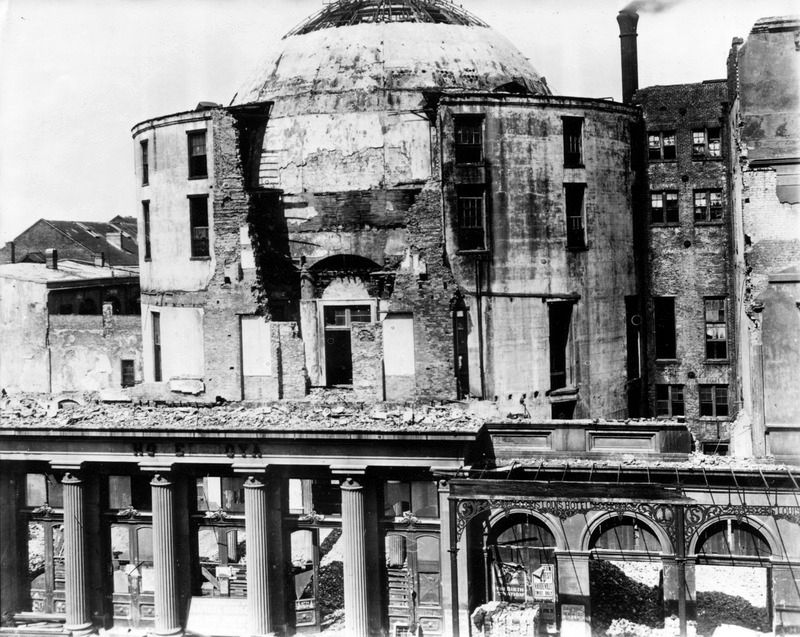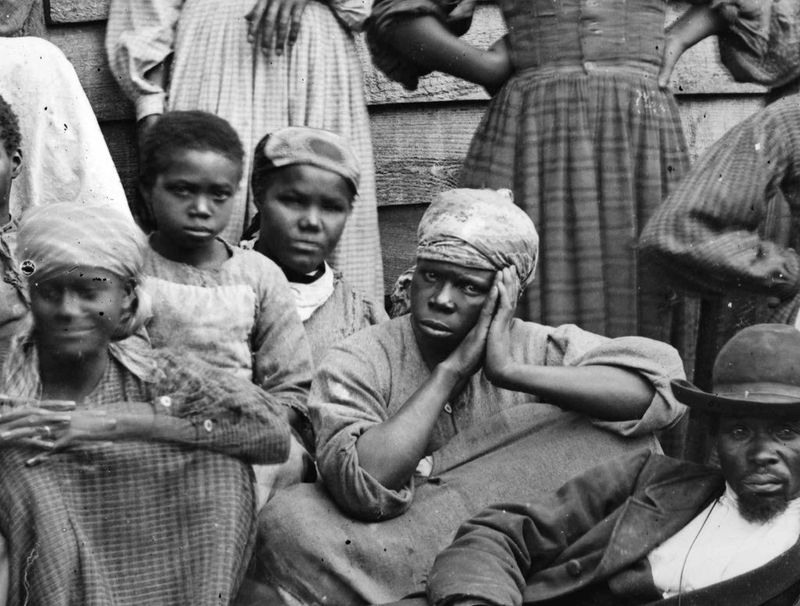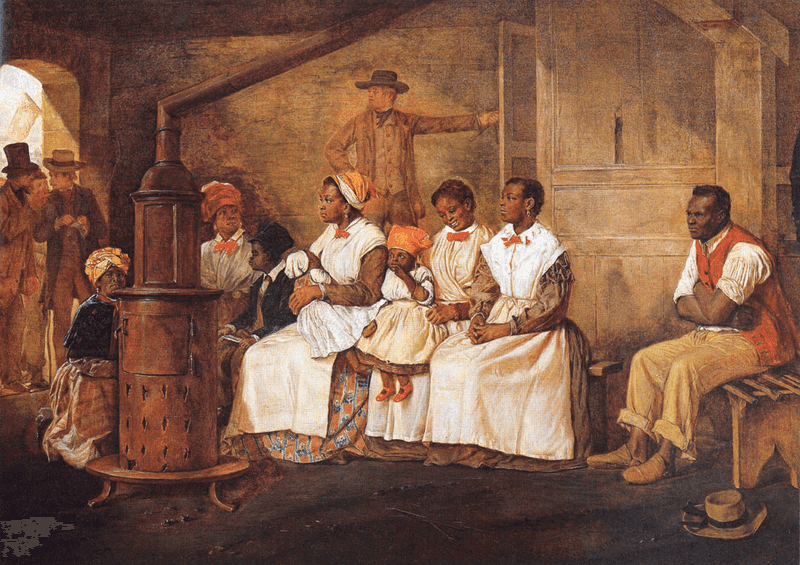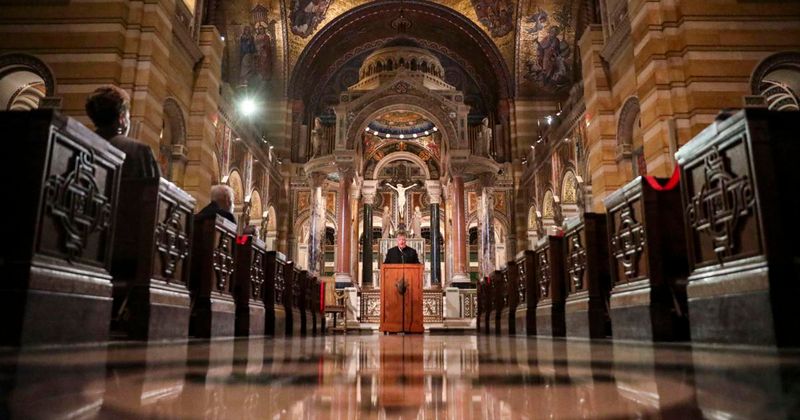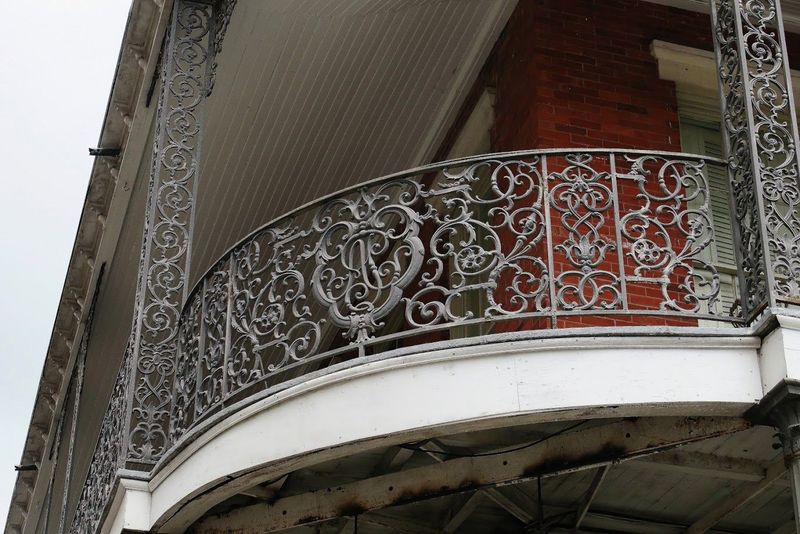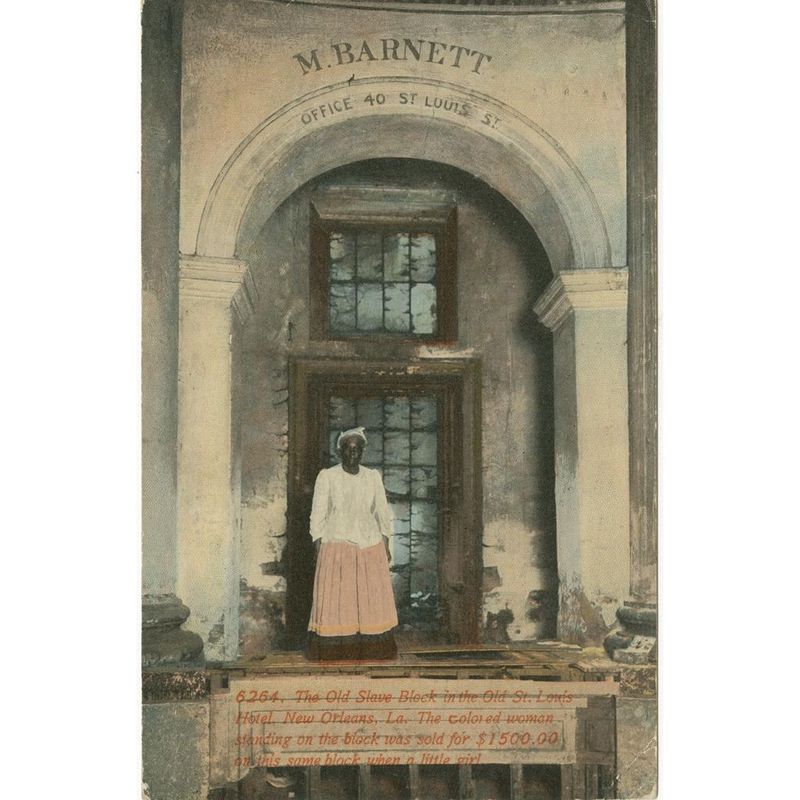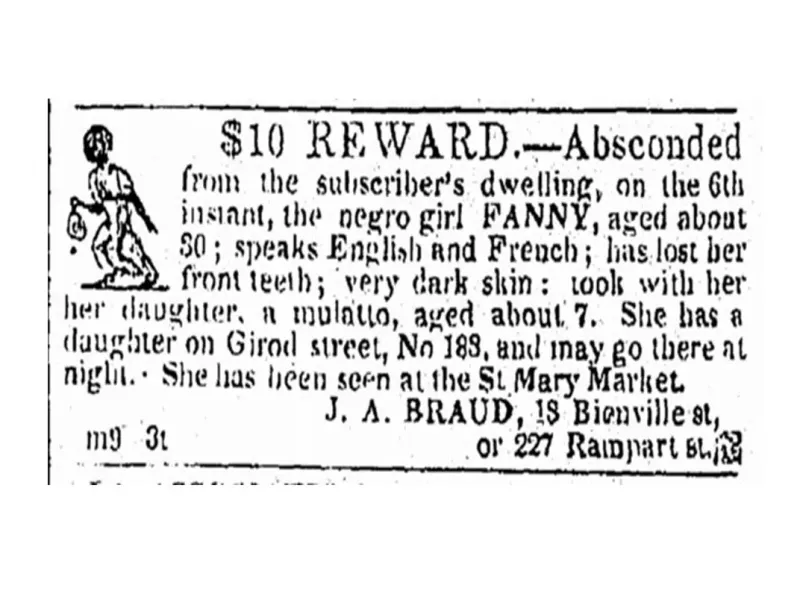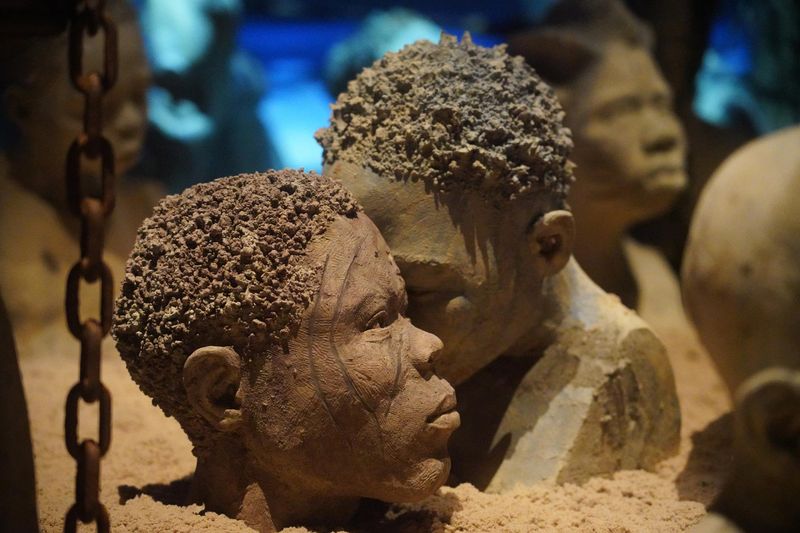Beneath the colorful celebrations and jazz music of New Orleans lies a painful history most tourists never learn about.
From the early 1800s until the Civil War, New Orleans became America’s largest slave trading hub, where human beings were bought and sold like property on a massive scale.
This dark chapter shaped not only the city’s economy and architecture but continues to influence its culture and social landscape today.
1. America’s Biggest Human Marketplace
By the 1840s, New Orleans had transformed into the largest slave market in the United States. The city’s strategic location at the mouth of the Mississippi River made it the perfect commercial center for the domestic slave trade. Ships arrived regularly with human cargo, while wealthy plantation owners from across the South traveled to the city specifically to purchase enslaved people. Local merchants and traders built fortunes from commissions on these sales. The city’s slave markets operated with industrial efficiency, processing thousands of people annually through a system designed to maximize profits while completely disregarding human dignity.
2. 135,000 Lives Bought and Sold
The sheer scale of human trafficking in New Orleans staggers the imagination. More than 135,000 enslaved people passed through the city’s markets between 1804 and 1862, generating millions in today’s dollars. These weren’t just numbers on a ledger. Each person represented a life torn from family, forced to work under brutal conditions, and denied basic human rights. Men, women, and children were transported in chains to the city, often walking miles through the streets to auction blocks. Personal accounts from survivors describe the terror of standing on auction blocks while strangers examined their bodies and decided their fates.
3. Tourist District’s Hidden Horror
Today’s French Quarter attracts millions with its ornate balconies and lively atmosphere. Few visitors realize they’re walking past buildings that once housed some of America’s busiest slave markets. Streets like Chartres, Royal, and St. Louis contained numerous auction houses where enslaved people stood on blocks while buyers bid on them. The old St. Louis Hotel (now gone) featured a rotunda specifically designed for slave auctions, allowing wealthy buyers to bid comfortably from elevated seating. Many existing buildings still bear architectural evidence of their dark past—basement areas that once held enslaved people awaiting sale and courtyard spaces where human inspections occurred.
4. Human Beings Advertised Like Cattle
Newspapers across New Orleans regularly featured advertisements for enslaved people alongside notices for furniture and property sales. These dehumanizing ads described people as if they were livestock, emphasizing physical attributes and skills while ignoring their humanity. Typical language included phrases like “strong field hand,” “excellent breeder,” or “docile house servant.” Publications like the Daily Picayune ran entire sections dedicated to upcoming slave auctions, listing ages, skills, and physical conditions of those to be sold. Some ads even promoted enslaved people as having “cheerful dispositions” or being “without vices”—marketing language designed to fetch higher prices for human beings.
5. Hidden Holding Pens Throughout the City
Slave traders in New Orleans mastered the art of hiding their business in plain sight. Many facilities where enslaved people were held before auction were deliberately disguised as ordinary buildings to maintain the city’s refined appearance for tourists and upper-class residents. These holding pens—called “slave depots” or “marts”—often resembled warehouses or boarding houses from the outside. Inside, however, they contained cells and auction rooms where people awaited sale. Some facilities even featured special “showrooms” where enslaved people were cleaned, dressed, and sometimes forced to perform tasks to demonstrate their abilities to potential buyers.
6. An Economy Built on Human Trafficking
The slave trade wasn’t just one aspect of New Orleans’ economy—it was the foundation upon which the entire financial system stood. Banks provided loans specifically for purchasing enslaved people, while insurance companies offered policies protecting slave traders’ “investments.” Shipping companies transported enslaved people, hotels housed slave traders, and merchants supplied food and clothing for people awaiting auction. Even the city government profited directly through taxes on slave sales and fees for market licenses. Many of the grandest mansions in the Garden District were built with wealth generated directly from slave trading or plantation labor performed by enslaved people.
7. Congo Square: Rare Space for African Culture
Amidst the brutality of slavery, Congo Square emerged as a vital cultural sanctuary. Located in what is now Louis Armstrong Park, this space became the only place where enslaved Africans could legally gather on Sundays to maintain their cultural practices. Here, they played traditional drums, danced, sang in their native languages, and sold handmade goods in a market system similar to those in West Africa. White observers often watched these gatherings with a mixture of fascination and fear. Music historians trace the roots of jazz directly to these gatherings, where African rhythms blended with European instruments to create entirely new musical forms that would eventually transform American culture.
8. Families Torn Apart for Profit
Perhaps the most heartbreaking aspect of New Orleans’ slave markets was the routine separation of families. Children as young as two years old were frequently sold away from their parents when buyers weren’t interested in purchasing entire families. Auction advertisements specifically highlighted young children as being “ready for training” or “suitable for house service.” Mothers often had no warning before their children were sold, leading to devastating scenes of separation on auction days. Court records and firsthand accounts describe parents desperately trying to locate children sold away from them, sometimes spending decades searching across the South with little hope of reunion.
9. Religious Institutions Profiting from Bondage
Many New Orleans churches and religious orders were deeply entangled in the slave system, owning enslaved people to maintain their properties and generate income. The Ursuline Convent, St. Louis Cathedral, and numerous Protestant churches all owned enslaved people at various points. Religious institutions often justified their participation through biblical interpretations supporting slavery. Some even operated businesses using enslaved labor, including brick-making operations and agricultural enterprises. Church records reveal that religious leaders frequently accepted enslaved people as donations from wealthy parishioners, either keeping them as workers or selling them for profit to fund church activities.
10. Enslaved Craftsmen Created the Iconic Cityscape
The elegant ironwork, detailed woodcarving, and distinctive architecture that draw tourists to New Orleans today were largely created by skilled enslaved craftsmen. These artisans—carpenters, blacksmiths, masons, and plasterers—rarely received credit for their artistry. Many enslaved craftsmen were hired out by their enslavers, who collected their wages while allowing them minimal freedom to practice their trades. Some master builders owned teams of enslaved artisans who constructed entire blocks of the city. The French Market, St. Louis Cathedral, Pontalba Buildings, and countless private homes showcase the exceptional craftsmanship of these unnamed artists whose skills helped create New Orleans’ distinctive architectural identity.
11. Women’s Horrific Double Burden
Enslaved women in New Orleans faced unique horrors beyond forced labor. Many were specifically marketed for their reproductive potential, with advertisements highlighting their childbearing history or “breeding” capacity. Young women were frequently subjected to sexual violence by enslavers and traders, with no legal protection. Some auction houses even had private rooms where buyers could “inspect” women away from public view. Medical records from the period show that enslaved women were often subjected to experimental gynecological procedures without anesthesia or consent, particularly at Charity Hospital, where doctors practiced techniques on enslaved patients before treating white women.
12. The Disturbing Trade in “Fancy Girls”
A particularly disturbing segment of New Orleans’ slave trade involved the marketing of light-skinned enslaved women specifically for sexual exploitation. These women and girls, euphemistically called “fancy girls,” were sold at premium prices to wealthy men as forced concubines. Special auctions for these women were often conducted privately in hotel rooms or the back rooms of establishments. Advertisements used coded language like “suitable for companionship” or “exceptionally refined” to indicate their intended purpose. Some women were purchased specifically to be installed in “plaçage” arrangements—a system where wealthy white men established secondary households with enslaved or free women of color.
13. Behind Closed Doors: The Private Sale Network
Not all slave trading in New Orleans occurred in public markets. A sophisticated network of private sales allowed wealthy buyers to purchase enslaved people discreetly, away from public scrutiny. These transactions often took place in hotel rooms, private homes, or exclusive clubs. Brokers maintained lists of available enslaved people and connected them with buyers seeking specific skills or attributes. Private sales were particularly common for highly skilled workers like chefs, musicians, or craftspeople, as well as for the aforementioned “fancy girls.” This shadow market allowed the city’s elite to maintain an appearance of gentility while actively participating in human trafficking.
14. Resistance Revealed in Runaway Advertisements
Despite overwhelming odds, enslaved people in New Orleans constantly resisted their bondage. Newspapers filled with “runaway slave” advertisements provide powerful evidence of this resistance. These ads, placed by enslavers, inadvertently documented acts of courage and determination. Many described distinctive scars from previous punishments, indicating people who had repeatedly attempted escape despite severe consequences. Some ads mentioned enslaved people who had learned to read or write despite laws forbidding literacy, while others noted individuals who had developed networks of allies or repeatedly escaped to the same locations—suggesting organized resistance networks operating throughout the city.
15. Echoes of Slavery in Modern New Orleans
The legacy of slavery remains deeply embedded in New Orleans’ social and economic landscape. Modern racial disparities in wealth, housing, and education can be traced directly to policies established during and after slavery. Many tourist attractions fail to acknowledge their connections to this history. However, new efforts like the Whitney Plantation museum specifically focus on telling the stories of enslaved people rather than their enslavers. Community organizations now work to identify and mark former slave market sites, while universities and historical societies are digitizing slave trade records to help African Americans trace ancestors who passed through New Orleans’ markets—connecting present generations to their resilient forebears.


